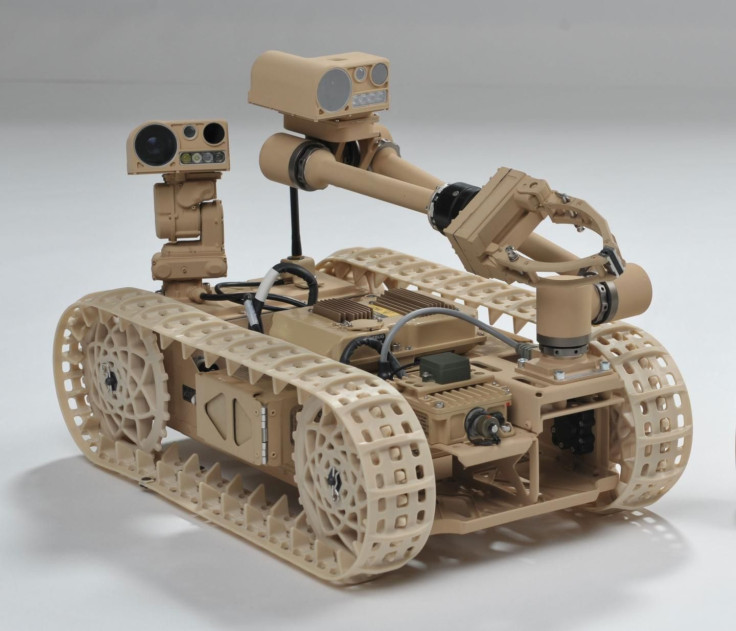Army Robots Can Get Back On Their Feet Now After Falling Over

Army robots might not look as intimidating as what has been depicted in popular culture, but often these machines prove critical in gathering useful mission intel from hard-to-access places. Their capabilities not just aid the overall mission, but also help in keeping the soldiers safe.
However, sometimes the unique relation between man and machine could leave the human counterpart exposed to certain risks on the field. For instance, the case of this soldier who “valued his robot so much, he got out of his vehicle to rescue the robot when he couldn't get it turned back over," Chad Kessens from Army Research Lab (ARL) said in a statement. "That is a story I never want to hear again."
Most of the robots face trouble in reorienting themselves after falling down, and this was one of the many similar cases that prompted Kessens and colleagues from Johns Hopkins University (JHU) Applied Physics Laboratory to develop a software that could help a robot get back up on its feet after falling. A bot like this, as the researchers described, would be less dependent on the soldier and won’t draw unnecessary attention, thus keeping them out of harm’s way.
"These robots exist to keep Soldiers out of harm's way," Reed Young, Robotics and Autonomy Program Manager at JHU/APL, said in a statement. "Self-righting is a critical capability that will only further that purpose."
As reorienting and getting back up is a critical requirement for bomb disposal robots, the software developed by Kessens and team was first integrated with the Advanced Explosive Ordnance Disposal Robotic System (AEODRS), a lightweight, back-packable member of the explosive ordnance disposal robotic system. Then, the self-righting capabilities of the robot were extended with more joints and degrees of freedom, thanks to adaptive sampling techniques developed by JHU researcher Galen Mullins.
“The analysis I've been working on looks at all possible geometries and orientations that the robot could find itself in," Kessens said. "The problem is that each additional joint adds a dimension to the search space--so it is important to look in the right places for stable states and transitions. Otherwise, the search could take too long."
The problem was solved when the team integrated the robot with a Range Adversarial Planning Tool (RAPT), a software framework originally developed to test autonomous robotic systems in underwater vehicles. It provided the AEODRS robot a grasp of what and where to look and how to orient itself using its eight degrees of freedom after falling over in any way.
"For this work, we were looking for states where the robot could transition from a stable configuration to an unstable one, thus causing the robot to tip over," Mullins concluded. "My techniques were able to effectively predict where those transitions might be so that we could search the space efficiently."
Moving ahead, the software could be used on more than one type of robot, making them self-reliant and safer for their on-field handlers.
The study titled, "Evaluating Robot Self-Righting Capabilities using Adaptive Sampling,” was published in IEEE's Robotics and Automation Letters.
© Copyright IBTimes 2025. All rights reserved.





















